-
×
 Because Of You FL-297 700,000₫
Because Of You FL-297 700,000₫ -
×
 Thinking About You FL-239 700,000₫
Thinking About You FL-239 700,000₫ -
×
 The Poetry Of Love FL-390 3,190,000₫
The Poetry Of Love FL-390 3,190,000₫ -
×
 Our Little World FL-409 1,950,000₫
Our Little World FL-409 1,950,000₫ -
×
 The Melody of Us FL-401 1,250,000₫
The Melody of Us FL-401 1,250,000₫
Useful Information
Mass Schedule Of The Catholic Church Hoi An

Church Location
06 Nguyen Truong To, Hoi An City (Locate on Google Maps)
Hoi An Parish – Schedule of Daily Masses
| Day | Time | Description |
|---|---|---|
| Sunday | 05:30 | Morning Mass |
| 09:00 | Children’s Mass | |
| 16:00 | English Mass | |
| 18:30 | Evening Mass | |
| Weekdays | Monday to Friday | |
| 05:00 | Morning Mass | |
| 18:30 | Evening Mass | |
| Saturday | 05:00 | Morning Mass |
| 17:30 | Sunday Mass | |
About Hoi An catholic Church.
- Year of the founding of the Church: 1615
- Diocese: Da Nang
Hoi An church is a Catholic church located in Hoi An city, Quang Nam province of Da Nang diocese. The current church was built in 1965, but its history lasted longer because it is the church of the oldest parish in Vietnam.
History of Hoi An Parish Church
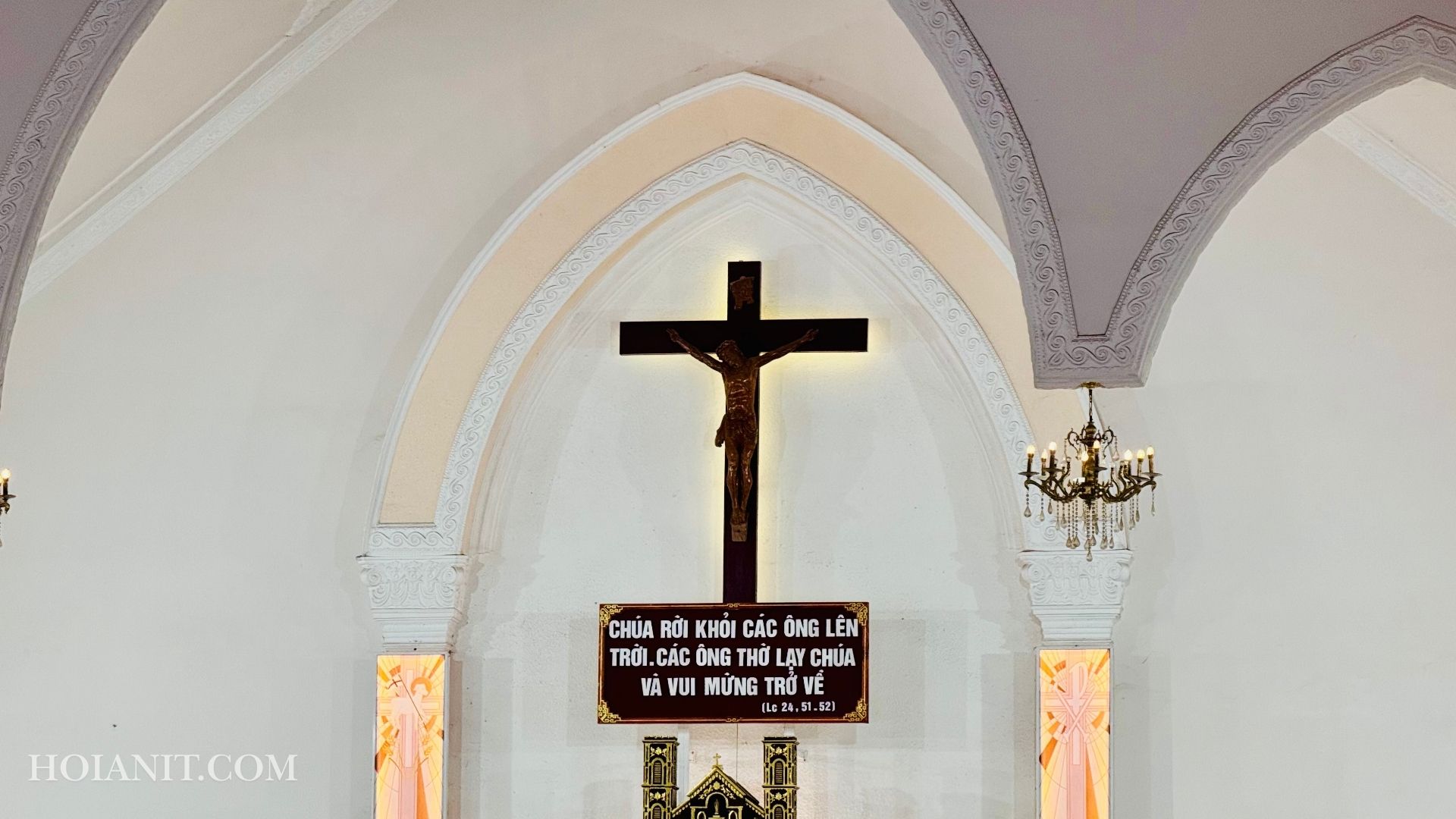
In 1615, three Jesuits were priest Francesco Buzomi (Italian), priest Diego Carvalho (Portugal) and brother Antonio Dias (Portugal), and two Japanese people, Jose and Paulo, to Tourain ( Da Nang) and then go to Faifo (Hoi An) to evangelize as well as serve pastoral care for a Japanese faithful community here. In Hoi An, the preaching was unfavorable because most of the Hoi An people who are foreigners, do business and do not care much about preaching, so missionaries came to Thanh Chiem (away from the Association) An 10 km) to evangelize local people. By April 1615, 10 Catholics were baptized, and in the following year, it reached more than 300 people. Upon seeing the work here smoothly, missionaries decided to stay here to develop missionary work.
January 18, 1616, Italian missionary Francisco Busomi founded Hoi An parish and built a church in Hoi An.
In 1914, some parishioners repaired and rebuilt a new, wooden, church. In 1935, the church was replaced with a Gothic church. In 1965, this church was removed and replaced by a new church with the current style.
Church architecture
The church is located at 02 Nguyen Truong To Street (French period called Gouverneur Général Cherles), has a large campus, surrounded by brick walls built of bricks. Hoi An church has a stylized three-door gate of the roof, the top of the gate has a picture of a cross. After the gate there is a large yard. On the left side of the yard is a large cave under the canopy of old trees, on the right side of the grassy hill – fake painting and grave of Western clergy.
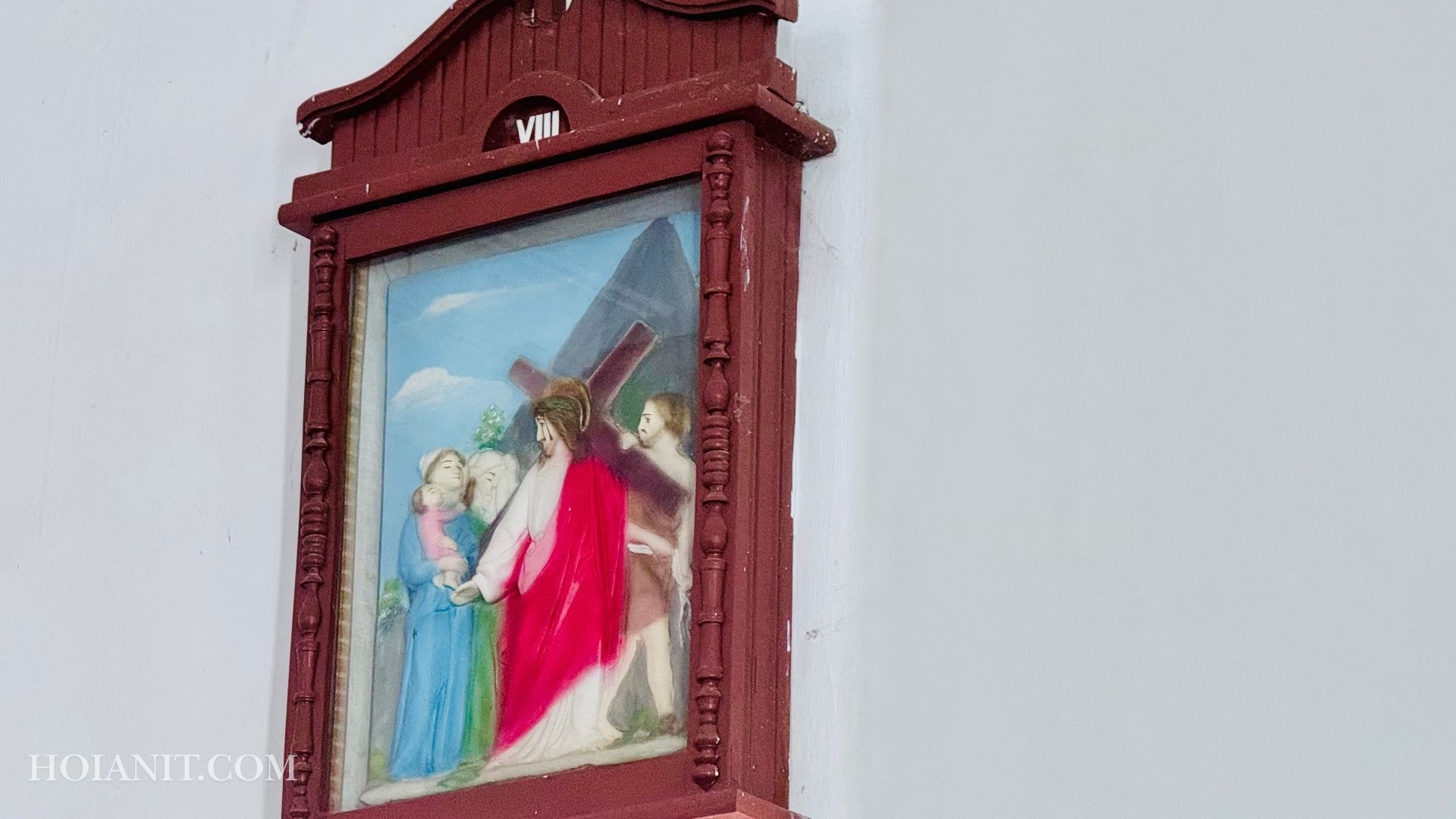
The church was built in Gothic architecture, combined with traditional architecture of Hoi An. The interior of the church is divided into 3 main spaces with functions such as the area for lay people, sanctuary and dress room.
The area for the lay people sits with four rows of chairs, on the wall of the hanging walls of reliefs depicting the tragic journey of Jesus. The sanctuary is designed higher around it, in the middle is a large table used to celebrate Mass, placed on a high platform with three steps. The dressroom is located behind the sanctuary, which is the place where the priest’s ritual and costumes are kept. The entire church is fitted with a color mirror system to show a more sacred and more elegant space.
Tomb area of Western clergy
The grave of Western missionaries is located in Hoi An’s precinct. This is one of the few remaining monuments in Hoi An related to the spread of Catholicism by the Jesuits or Western Missionaries in Vietnam in the early seventeenth to twentieth centuries.
At the grave site, in addition to the 3 tombs, the Hoi An town government was rebuilt in 1980, there were 2 tombs set up earlier. The grave area is divided into two ranges: the innermost grave sequence consists of three graves which are the resting place of clergy Gulielmo Mahot, Franxico Perez and Valere Rist. The grave near the gate consists of two graves, the tomb to the right is the burial place of the Vietnamese priest Paul Nguyen Tuong. The remaining tomb is the tomb of chaplain Pierre Auguste Galloz, the French.
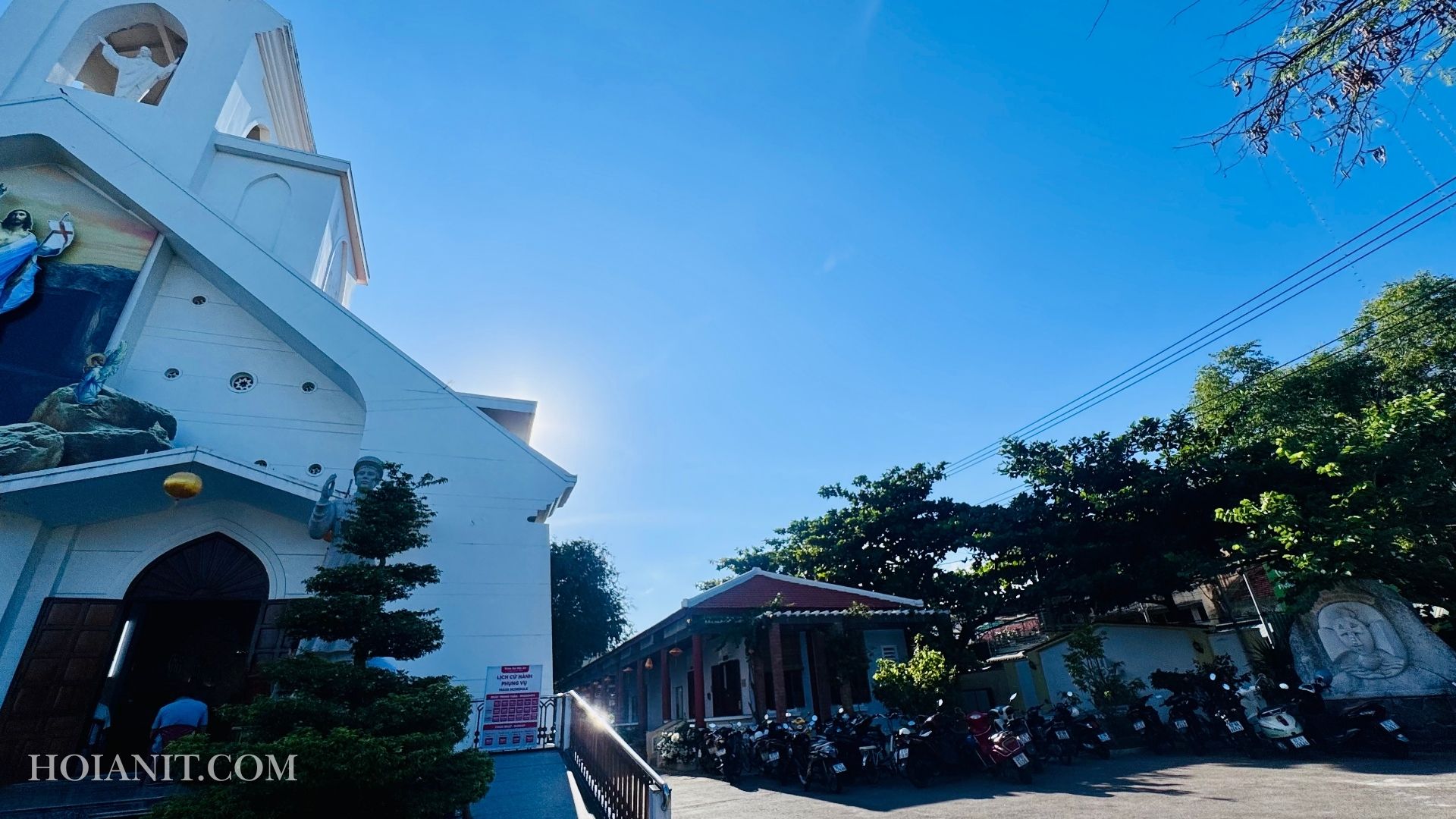
Historical sites
On April 7, 2008, Hoi An church and the grave of Western clergy, in Cam Pho ward, Hoi An city, Quang Nam province were signed the decision by the Chairman of Quang Nam Provincial People’s Committee Nguyen Duc Hai. received the title of Provincial-City Historical and Cultural Monuments. Hoi An church used to be a residence and mission place for Jesuits, Paris Missionary Association in Dang Trong. This is also a place for Vietnamese teachers to learn Vietnamese and to develop the Vietnamese script and a place of exchange and contact with the East-West culture in Hoi An. The church is also often gathered by the missionaries who are the products of Western science to offer to the Nguyen Lords.
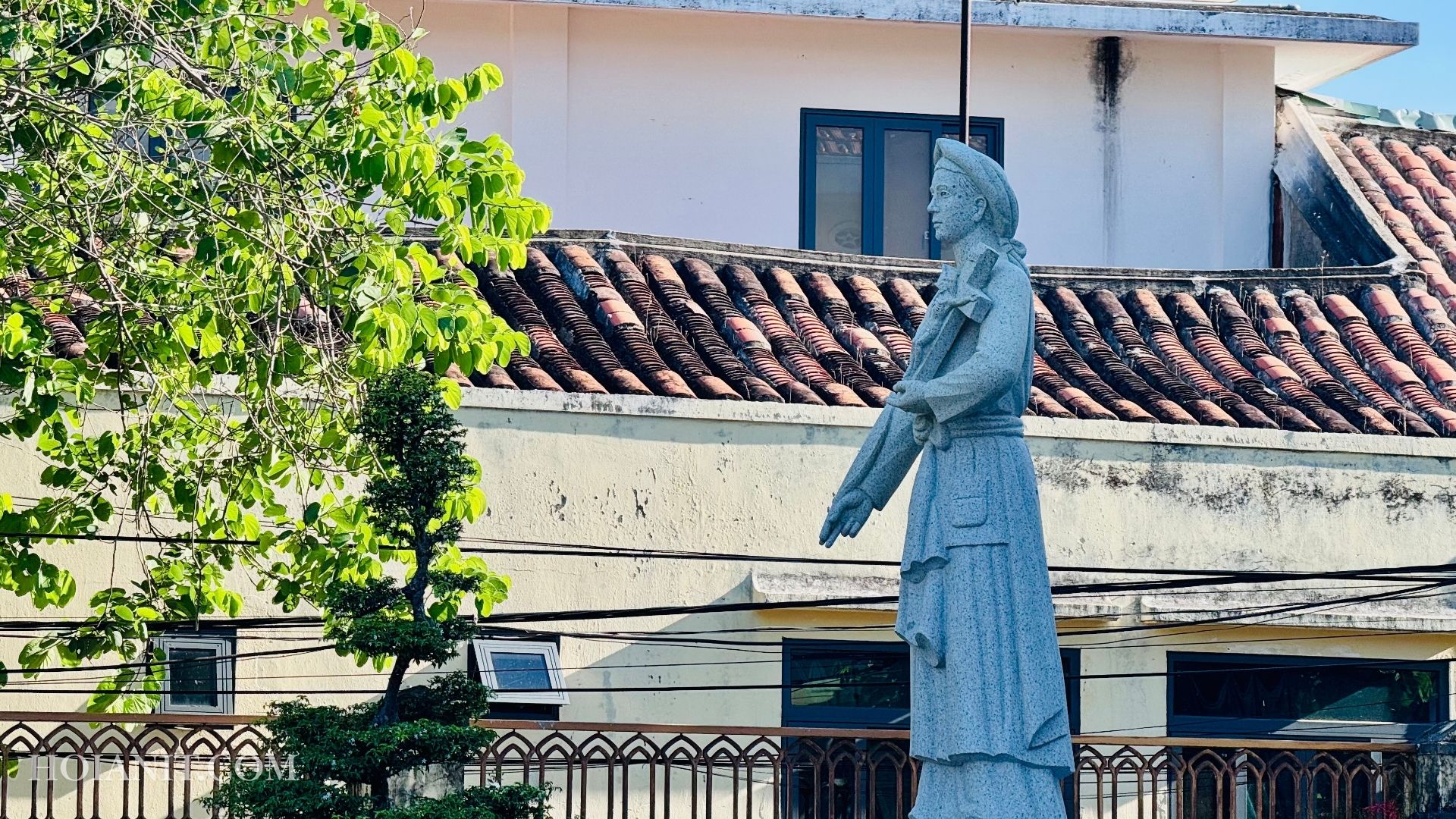
Priests Information
At the beginning of the 20th century, Paris missionaries gathered the remaining parishioners or had jobs in Hoi An as a branch of Tra Kieu. According to Father Peter Le’s discovery: “It was not until 1914 that some parishioners gathered to build a chapel on a mound, near the cemetery, but there was no priest in charge. Sometimes his father was at Phuoc Kieu to celebrate Mass. “(Hoi An catholic material, 385 years anniversary, Le Nhu Hao, page 7) The priest in charge of this area at that time was Joseph Lalanne, the late Lan, the vicar of Tra Kieu and the surrounding areas. Next was Father Pierre Auguste Gallioz MEP, who tried to set up and take care of the families Phuoc Kieu and Vinh Dien, La Nang and Hoi An.
1. THE FACULTY OF PIERRE AUGUSTE GALLION THIET (1935-1953)
By 1935, Father Gallioz formally built Hoi An church with stone bricks with two beautiful towers. In 1938, Father Gallioz was approved to extend the land on three Charles Gouverneur Général roads, (Nguyen Truong To) Oscar Mouliè (Ly Thuong Kiet) and Pasteur. He established an orphanage to care for orphans. In 1953, overworked, he passed away and was buried in the cemetery next to the church.
2. Priest Paul Nguyen Tuong
Priest Paul Nguyen Tuong, a native of Nha Da, Binh Dinh worked as a parish priest to continue the work of Paris missionaries. This is the Parish’s golden age. The Geneva Agreement ended the war, peace returned in Quang Nam, Hoi An parish became a convenient location because it was the administrative capital of Quang Nam province. From the time of Father Peter Maria as bishop of Qui Nhon, the religious movement was great. The number of lay people went up with the new brothers of Cam Hai, Cam Nam, Cam Kim, Ban Thach, Cam Chau, Cam Ha, Vinh Xuan … Local priests like Father Paul Vo Huu Tu (La nang) , James Nguyen Dinh Thuan (Vinh Dien), Francis Nguyen Quang Sach (Xuyen Quang), Francis Xavier Nguyen Xuan Van (Phu Huong) supported the help …. The Hoi An orphanage expanded to 6000 square meters and the St. Paul nuns like Sr Florence were active. Father Tuong built Chan Phuoc Thien Primary School. The Catholic youth movement, Hung Tam activities regularly.
In parallel with Hoi An, the Le Loi family founded by priest Antôn Bui Ngoc Troi (in Hanoi) in 1954 for northern believers migrated also works strongly with churches, parishes, and free medicine rooms. , building Le Bao Tinh Primary School over 500 students.
Since the return of Bishop Peter Maria to become bishop of Da Nang in 1963, Hoi An became Hoi An Parish Church: Hoi An, Vinh Dien, La Nang, Ai Nghia, Phu Huong, O Gia, Hoang Phuoc, and Ha Tan. The parishes in the south of Thu Bon river and from Tra Kieu district go to Tam Ky district.
The coup overthrew the First Peace in late 1963, the great flood in the 1964 Dragon year, the war escalated in 1965, causing much damage to the parish. New Catholics were beaten, killed and killed by groups of “1963 revolution”. In contrast, Hoi An became a place to attract people to run from Quang Nam countryside. In Cam Ha, Father James Nguyen Thanh Tri built a church for the refugees to fight floods and war.
Father Paul Thought planned many great works like the construction of a new church but on April 14, 1964, he suddenly died while sleeping. Father Paul Vo Huu Tu, the pastor of La Nang, was asked by the superior to be part of Hoi An until 1965.
3. GIUSE LE VAN LY (1965-70)
In 1965, Father Joseph Le Van Ly, from Tra Kieu, came from Ha Tan to become Hoi An native. At that time, the old Hoi An church, which was only 144 square meters in area, did not have enough space for a large number of parishioners, so in 1965 Father Joseph broke the 1935 church to rebuild a new old church with an area of 720 square meters so far. Because it was right at the beginning of the airstrip, the old government did not make a bell tower, fearing a plane crash.
Enhanced aide priests include Father Anthony Tran Van Truong, Joseph Vu Dan, Francis Xavier Tran Quang Chau, John Baptist, Dao Duy Khai. (chaplain in charge of Cam Ha).
In 1970, Father Joseph Le Van Ly came to An Hai.
4. Priest Paul Truong Dac Can (1970 – 1974)
Priest Paul Truong Dac Can, a native of Gia Huu and Binh Dinh were transferred to Hoi An. Although he was in the war period, with a young, knowledgeable and progressive spirit, he strengthened the facilities such as fence walls, church gates, purchased 3200 meters of land “Petrol Tree” of Tran Thanh ethnicity for the price VND 170,000 (over 20 gold trees at the time). He cares about young people, youth education, vocational training, job creation and many relief work to help the poor and war victims.
5. Father Pierre Le Nhu Hao. (1974 – 2003)
In 1974, Father Pierre Le Nhu Hao, original Phu Dam, administrator of Tra Kieu, was transferred to Hoi An. With the available strategy, he began to implement many projects such as church yardification, making Our Lady’s caves, etc. But the 1975 event caused the face of the parish to change its life. Strategic evacuation, evacuation of the war, economic evacuation, political evacuation … has led Hoi An town to dispose of and the parishioners from 2,216 dropped to below 1,000. The social situation requires Father’s ability to manage, perseverance and public sacrifice to care for the parishioners and some poor compatriots. Though not as convenient as their predecessors, Father tried trying to finance the restoration of the church, the Mother Cave, the tombs of the first missionary clergy, expanding the parish house to have a place to live … ”(Excerpts from Hoi An Catholic Church, page 11, twelfth)
The parish lost most of its land, the orphanage, the school, the land of Le Loi’s creed … in the new regime. Patience, he guided lay people into the life of the country with the spirit of dialogue, mutual respect between religion and your religion. Although the economy was difficult in 1995, he built a bell tower and church interior works. Another important work is Hoi An parish house and “catechism lecture”.
He persisted in accepting everything according to God’s will. When the country entered the renovation period, in 2000, Hoi An ancient town became a World Cultural Heritage, visitors came and Hoi An became prosperous, wealthy, the activities of Hoi An parish were also favorable. more beneficial. In the Holy Year 2000, Father Peter welcomed the pilgrimage groups and exhibits of historical documents related to Hoi An Parish.
Due to his old age and weakness, he retired in 2003, after 29 years of sad sharing with Hoi An parish.
(1974 – 2003)
In 1974, Father Pierre Le Nhu Hao, original Phu Dam, administrator of Tra Kieu, was transferred to Hoi An. With the available strategy, he began to implement many projects such as church yardification, making Our Lady’s caves, etc. But the 1975 event caused the face of the parish to change its life. Strategic evacuation, evacuation of the war, economic evacuation, political evacuation … has led Hoi An town to dispose of and the parishioners from 2,216 dropped to below 1,000. The social situation requires Father’s ability to manage, perseverance and public sacrifice to care for the parishioners and some poor compatriots. Though not as convenient as their predecessors, Father tried trying to finance the restoration of the church, the Mother Cave, the tombs of the first missionary clergy, expanding the parish house to have a place to live … ”(Excerpts from Hoi An Catholic Church, page 11, twelfth)
The parish lost most of its land, the orphanage, the school, the land of Le Loi’s creed … in the new regime. Patience, he guided lay people into the life of the country with the spirit of dialogue, mutual respect between religion and your religion. Although the economy was difficult in 1995, he built a bell tower and church interior works. Another important work is Hoi An parish house and “catechism lecture”.
He persisted in accepting everything according to God’s will. When the country entered the renovation period, in 2000, Hoi An ancient town became a World Cultural Heritage, visitors came and Hoi An became prosperous, wealthy, the activities of Hoi An parish were also favorable. more beneficial. In the Holy Year 2000, Father Peter welcomed the pilgrimage groups and exhibits of historical documents related to Hoi An Parish.
Due to his old age and weakness, he retired in 2003, after 29 years of sad sharing with Hoi An parish.
6. BONAVENTURA MAI THAI (2003-2006)
A priest, who had just studied the Fa, was sent by Rev. Paul Tinh Tinh to replace Father Peter: Father Bonaventura Mai Thai, Thanh Binh, Da Nang. With youth and understanding, he was supported by many people in the reform program.
In terms of material, he swept the basilica, repainted the roof tile, strengthened the sound system for the choir, built a “spacious new living house” to the side of the church. As for souls, they also tried to re-educate the churches, unions, especially Legio Mariae, middle-aged men and legalize many couples.
The handover minutes of October 28, 2006, indicate that the parish has 1,225 people and 384 households.
In October 2006, he was transferred to Thanh Duc Parish’s “Elder Brother” parish.
7.Father Antôn Nguyen Truong Thang (2006-?)
In November 2006, Father Antôn Nguyen Truong Thang, An Ngai and Thomas Vo Minh Danh, An Son’s original were recruited by Bishop Joseph Chau Ngoc Tri, who was ordained a bishop of Da Nang, to look after Hoi An Parish. . Shortly after that, Bishop Joseph assigned Phuoc Kieu and Go Noi to the Church. Hoi An parish, suddenly became a land with an area of over 25 km from Dien Ngoc, through Cua Dai, to Van Ly (Dien Quang and Go Noi).
The two brothers continued their careers.
Restoration work, construction of facilities, charity charity.
Over the past three years, repairing the Marian cave, handicapped road, paved the churchyard, newly built the second floor of the holy room, four doctrinal rooms, and a Catholic incense burner. Buy Phuoc Kieu land (800 meters). Repair Phuoc Kieu holy temple. The State received 2700 meters of “Gasoline” land.
Build 23 Dong Tam houses in which 5 families are not Catholic.
The nuns community of the Da Nang provincial drug lot with Dac Lo community continues to serve in education, liturgy, and charity work, helping difficult families, seeking scholarships for poor and single children Maintaining love porridge pot for many years.
The location is not much, there is now a great seminarist, some nuns of the Cross and practice the series.
Although it is a tourist city, the Catholics succeed in the economy not much, most of them have very modest jobs.
CONCLUDE
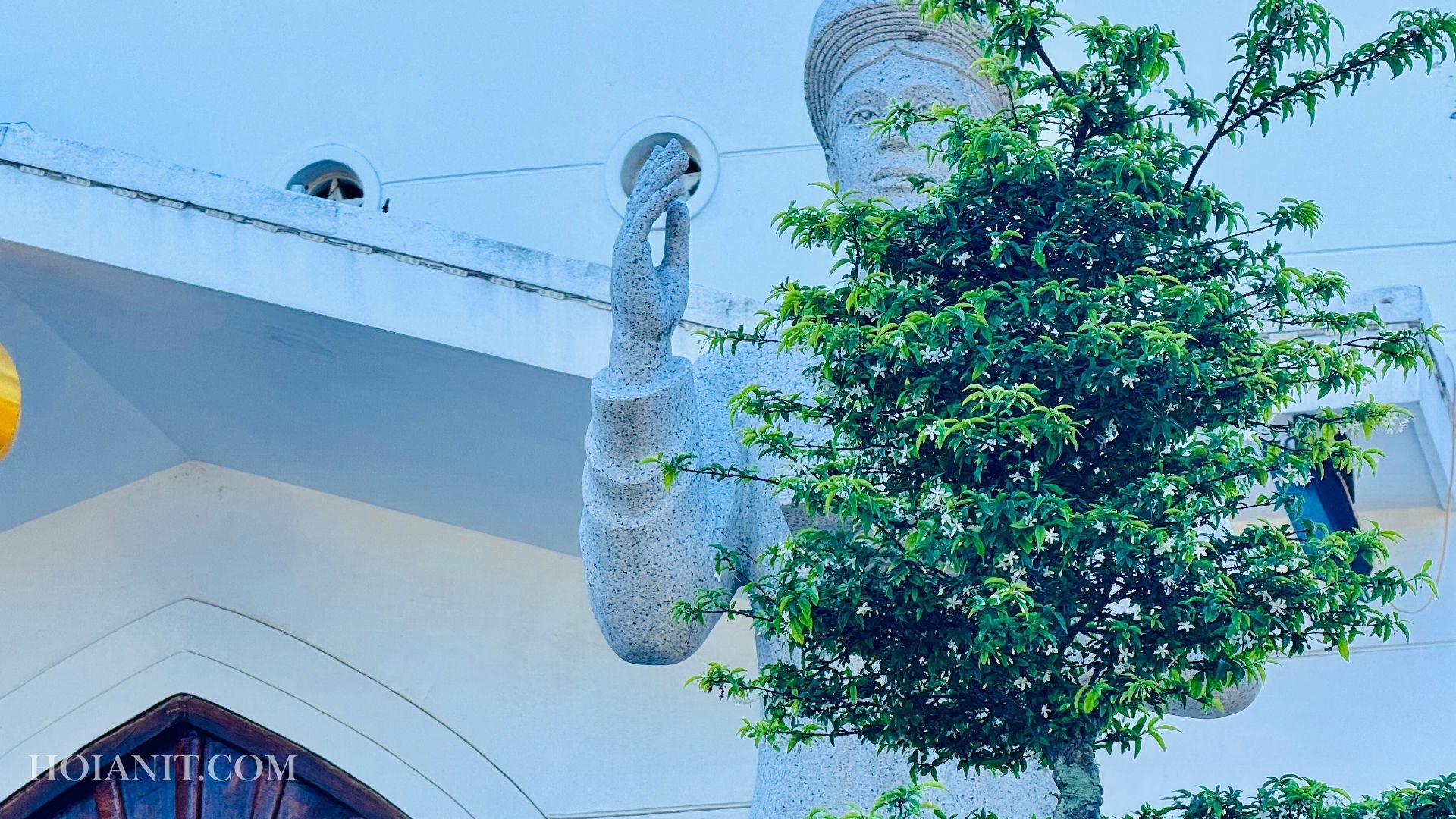
In December 2008, the People’s Committee of Quang Nam Province recognized the Church and Congregation of Hoi An Clergy Tomb as Quang Nam Provincial Cultural Monument in Hoi An City (World Cultural Heritage) but the parish establishment. still modest, unable to promote, far behind Buddhist relics.
For Vietnamese and global Catholics, Hoi An Parish deserves the world Catholic faith heritage. Here since the 17th century, many missionaries “leave without a date” for the purpose of lightening the Lord’s name, saving everyone at the command of the Redeemer “Go and preach the Gospel throughout the world.” “Mk 16,19.
Hoi An parish deserves to be the home of many Japanese, Portuguese, Avignon (Pope territory), Chinese, Spanish, Indian, French, Italian, German, Czechoslovakian, … countries that have provided many missionaries for missionary work in Vietnam in the 17th, 18th, 19th and 20th centuries.
Although Hoi An parish today is small, thanks to its long history of being called “the leading Parish, the cradle of the Vietnamese Church”. In less than five years, the parish officially celebrates 400 years. Da Nang diocese in particular and the Vietnam Church must do what is worthy of the heroic history of the predecessors in the land of Quang, Da city?
Hoi An August 2, 2010.
Article on the pilgrimage day of the Holy Year 8-8-2010 at the Danang Cathedral.
Father Anthony Nguyen Truong Thang
↓You may also love ♥️: Motorbike Rental Hoi An

 Because Of You FL-297
Because Of You FL-297  Thinking About You FL-239
Thinking About You FL-239  The Poetry Of Love FL-390
The Poetry Of Love FL-390  Our Little World FL-409
Our Little World FL-409  The Melody of Us FL-401
The Melody of Us FL-401 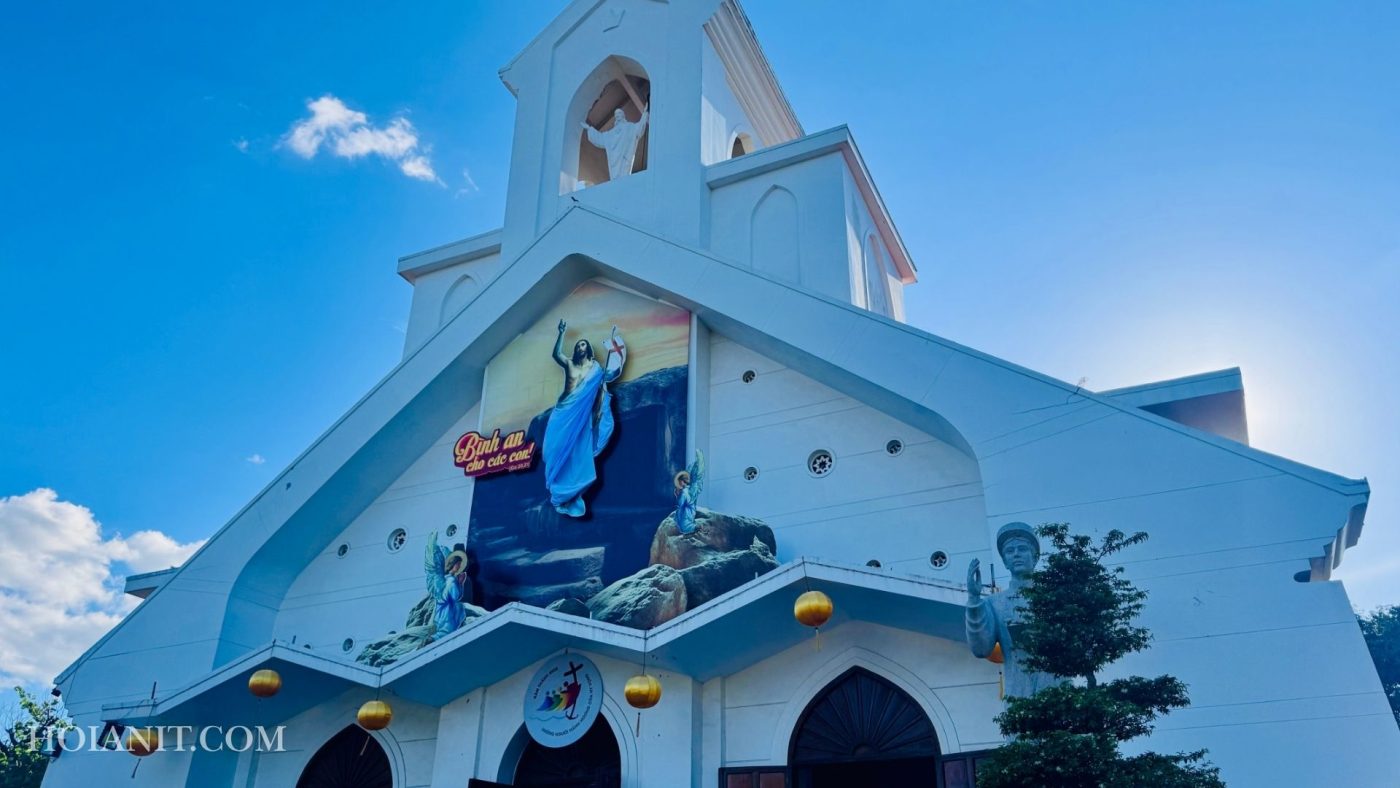















Motorbike Rental
Bicycle Rental
Flowers Florist
Electric Bicycle
Electric Scooter
Dirt Bike Rental
Money Exchange